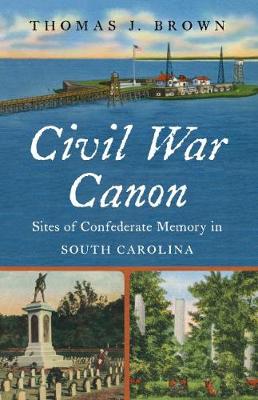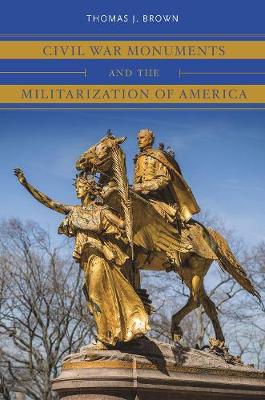Civil War America
2 total works
In this expansive history of South Carolina's commemoration of the Civil War era, Thomas Brown uses the lens of place to examine the ways that landmarks of Confederate memory have helped white southerners negotiate their shifting political, social, and economic positions. By looking at prominent sites such as Fort...Read more
In this expansive history of South Carolina's commemoration of the Civil War era, Thomas Brown uses the lens of place to examine the ways that landmarks of Confederate memory have helped white southerners negotiate their shifting political, social, and economic positions. By looking at prominent sites such as Fort Sumter, Charleston's Magnolia Cemetery, and the South Carolina statehouse, Brown reveals a dynamic pattern of contestation and change. He highlights transformations of gender norms and establishes a fresh perspective on race in Civil War remembrance by emphasizing the fluidity of racial identity within the politics of white supremacy.
Despite the conservative ideology that connects these sites, Brown argues that the Confederate canon of memory has adapted to address varied challenges of modernity from the war's end to the present, when enthusiasts turn to fantasy to renew a faded myth while children of the civil rights era look for a usable Confederate past. In surveying a rich, controversial, and sometimes even comical cultural landscape, Brown illuminates the workings of collective memory sustained by engagement with the particularity of place.
Despite the conservative ideology that connects these sites, Brown argues that the Confederate canon of memory has adapted to address varied challenges of modernity from the war's end to the present, when enthusiasts turn to fantasy to renew a faded myth while children of the civil rights era look for a usable Confederate past. In surveying a rich, controversial, and sometimes even comical cultural landscape, Brown illuminates the workings of collective memory sustained by engagement with the particularity of place.
This sweeping new assessment of Civil War monuments unveiled in the United States between the 1860s and 1930s argues that they were pivotal to a national embrace of military values. Americans' wariness of standing armies limited construction of war memorials in the early republic, Thomas J. Brown explains, and...Read more
This sweeping new assessment of Civil War monuments unveiled in the United States between the 1860s and 1930s argues that they were pivotal to a national embrace of military values. Americans' wariness of standing armies limited construction of war memorials in the early republic, Thomas J. Brown explains, and continued to influence commemoration after the Civil War. As large cities and small towns across the North and South installed an astonishing range of statues, memorial halls, and other sculptural and architectural tributes to Civil War heroes, communities debated the relationship of military service to civilian life through fund-raising campaigns, artistic designs, oratory, and ceremonial practices. Brown shows that distrust of standing armies gave way to broader enthusiasm for soldiers in the Gilded Age. Some important projects challenged the trend, but many Civil War monuments proposed new norms of discipline and vigor that lifted veterans to a favored political status and modeled racial and class hierarchies. A half century of Civil War commemoration reshaped remembrance of the American Revolution and guided American responses to World War I.
Brown provides the most comprehensive overview of the American war memorial as a cultural form and reframes the national debate over Civil War monuments that remain potent presences on the civic landscape.
Brown provides the most comprehensive overview of the American war memorial as a cultural form and reframes the national debate over Civil War monuments that remain potent presences on the civic landscape.

